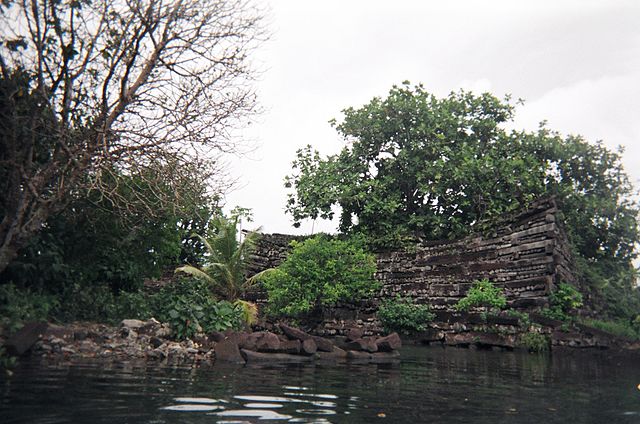“The nightmare corpse-city of R’lyeh…was built in measureless eons behind history by the vast, loathsome shapes that seeped down from the dark stars. There lay great Cthulhu and his hordes, hidden in green slimy vaults.”
– H.P. Lovecraft, The Call of Cthulhu (1928)
The ancient complex of Nan Madol is located on the eastern edge of the remote island of Pohnpei in the Federated States of Micronesia in the western Pacific. These fascinating ruins have attracted the interest and attention of many visitors throughout the centuries.
The site is also popularly known as the “Venice of the Pacific” and is a UNESCO World Heritage Site. This mysterious city is formed of a series of more than 100 maze-like human-made islets connected by a network of canals. Its name literally means “spaces between.” The ruins have inspired a lot of fictional works about lost worlds and civilizations.

The city has been abandoned for hundreds of years, and today many believe that it is still inhabited by ghosts. There are numerous local legends about the ruined city and its close area, and it is not surprising at all that it is nicknamed “Ghost City.”
Although these legends are likely to be only a product of human imagination, one cannot deny the otherworldly aura that radiates from the site. The American horror writer H.P. Lovecraft was inspired by the ruins and used them as a reference for creating the fictional lost city of R’lyeh. One of his fictional monsters was imprisoned in R’lyeh – the cosmic entity called Cthulhu, which was introduced for the first time in his short story The Call of Cthulhu.

The first known evidence of human activity in the area dates back to the first century BC, but archaeologists believe that the construction of the islets began between the 8th and the 9th century and that the construction of the first megalithic structures probably started in the 12th or the 13th century.
Archaeologists agree that some parts of the site have existed for more than a millennia.

The city was a political, ceremonial, and residential center of the Saudeleur dynasty. The dynasty united the native Pohnpei people and ruled with them until 1628 when Isokelekel defeated the Saudeleurs and officially started the Nahnmwarki Era.
Not much is known about the construction of the city. Archaeologists have located a few possible quarry sites on Pohnpei, but it still remains a mystery how the constructors moved such massive stones without using pulleys, metals, or levers. Legends tell that magical forces were used in the construction.
Legends are all that remain of the ruling Saudeleur people. Alongside the walls and platforms, they did not leave any art or carvings. According to the stories, they were religious and at times cruel. They had a powerful impact on Pacific Island culture.

There are approximately a hundred quite unusual stone block-like structures constructed atop coral reefs in a lagoon in the shallow waters on the eastern side of the small Temwen Island, which is situated adjoining the eastern coast of the island of Pohnpei.
The site encircles an area of approximately 200 acres. It is the only ancient city ever erected on top of a coral reef. The blocks have walls of coral boulders and basalt stones that are 25 feet tall and 17 feet thick in some parts.

Now, the remains of temples, stone palaces, tombs, and residential areas can be seen – most of them built between 1200 and 1500. A large part of the islets was used for dwellings, but some parts had special purposes and were used for canoe construction, coconut oil manufacture, and food preparation. At its zenith, the city had a population of 1,000 people, most of them commoners who served the nobles. The ruling elite forced their potential rivals to move into the city in order to obtain better control over them and to use them as servants.
Water and food had to be brought from inland because the area has no sources of fresh water or fertile soil. The number of inhabitants on the island of Pohnpei during that period was roughly 25,000 people. Today, Pohnpei has 35,000 inhabitants.

The enormous dimensions of the buildings, the ingenious techniques used and evident advanced construction knowledge, and the concentration of megalithic structures in an area that covers 7 square miles on the neighboring coasts of the island of Pohnpei show the highly-developed social and religious life of the island cultures of the era.

When the Europeans came to Pohnpei at the beginning of the 19th century, the city was already abandoned. Its inevitable decline probably started with the end of the Saudeleur dynasty. Now, the site is mostly hidden by the jungle and parts of it are overgrown with vegetation. The roots of mangrove trees have ruined some parts of the platforms and walls.
Recently, satellite images were taken that gave researchers a new perspective on this hidden pearl. There are speculations that Nan Madol was a part of the lost continent of Lemuria, but these claims, as well the very existence of Lemuria, are not backed up with any valid scientific evidence and will seemingly remain only a beautiful fantasy for a long time.
